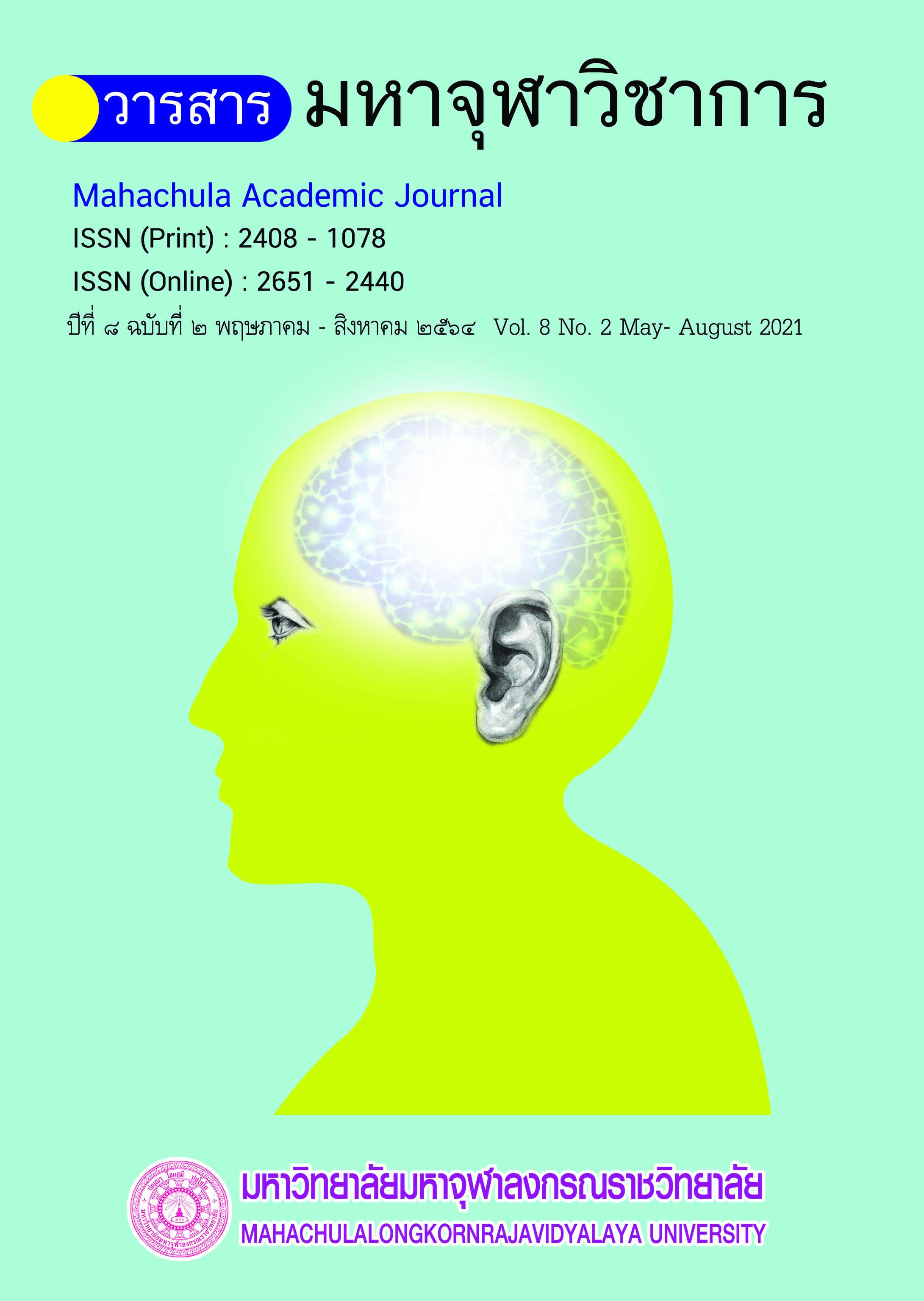Roles of Thailand’s National Theater for Safeguarding National Intangible Cultural Heritage
Main Article Content
Abstract
This study explored the role and management of Thailand’s National Theatre as well as suggested guidelines for safeguarding national intangible cultural heritage. The data collection employed mixed methods, including; observation, in-depth interviews, questionnaires, and satisfaction survey. The research participants were executives, scholars who have expertise in performing arts and theatre management, and 400 Thai and foreign audiences who had experienced watching the show at the National Theatre.
The research results reviewed that management resources of Thailand’s National Theatre include six key elements, which are (1) man, (2) money, (3) material, (4) method, (5) management, and (6) machine. In addition, the Theatre provided a range of performances to promote the intangible cultural heritage to the public, including; (1) Khon, (2) Lakorn, (3) Thai classical music, (4) Occidental music, and (5) other special programs. Therefore, Khon, also known as a masked dance drama, was the most popular performance to the audiences and their overall satisfaction toward the National Theatre was significantly high.
The research implications guide the management of the National Theatre that its work procedures should be constructively established, in line with the vision and mission of the Fine Arts Department. Moreover, the target market should be analysed in order to formulate an efficient strategic plan, followed by the practical evaluation for internal quality improvement. In term of cultural dissemination and development, more information about the performances and the Theatre should be provided and be accessible to every group of the audiences.
Article Details
References
ตะวัน สาดแสง. สร้างคน สร้างองค์กร คัมภีร์เพิ่มทักษะการบริหาร. กรุงเทพมหานคร : โรงพิมพ์ ส.เอเชียเพรส, ๒๕๔๘.
รพีพรรณ ลีสุวัฒน์. “ความสัมพันธ์ระหว่างปัจจัยเชิงสาเหตุ ทัศนคติและความตั้งใจในการบอกต่อผ่านสื่ออิเล็กทรอนิกส์ในธุรกิจบริการ”. วารสารการประชาสัมพันธ์และการโฆษณา. ปีที่ ๑๓ ฉบับที่ ๑ (มกราคม - มิถุนายน ๒๕๖๓) : ๕๒-๗๐.
คณะกรรมการส่งเสริมและรักษามรดกภูมิปัญญาทางวัฒนธรรม. การกำหนดลักษณะของมรดกภูมิปัญญาทางวัฒนธรรม พ.ศ. ๒๕๖๐. กรุงเทพมหานคร : กรมส่งเสริมวัฒนธรรม, ๒๕๖๐.
ศิริวรรณ เสรีรัตน์ และคณะ. กลยุทธ์การตลาดและการบริหารการตลาด. กรุงเทพมหานคร : ไดมอน อิน บิสสิเน็ต เวิร์ล, ๒๕๔๑.
นรีรัตน์ พินิจธนสาน. “นาฏยพาณิชย์ กรณีศึกษาการแสดงนาฏยศิลป์ไทยในโรงละครในเขตกรุงเทพฯ”. วิทยานิพนธ์ปริญญามหาบัณฑิต. วิทยาลัยนวัตกรรม : มหาวิทยาลัยธรรมศาสตร์, ๒๕๕๓.
รณชาติ บุตรแสนคม. “แนวทางการพัฒนาการจัดการเชิงกลยุทธ์ของ "เครือข่ายละครกรุงเทพฯ”. วิทยานิพนธ์ปริญญาดุษฎีบัณฑิต. บัณฑิตวิทยาลัย : มหาวิทยาลัยนเรศวร, ๒๕๖๐.
วรนาถ โอนอ่อน. “ความพึงพอใจต่อการใช้บริการโรงละคร เมืองไทย รัชดาลัย เธียเตอร์ ศูนย์การค้าเอสพลานาด”. สารนิพนธ์ปริญญาบริหารธุรกิจมหาบัณฑิต. คณะสังคมศาสตร์ : มหาวิทยาลัยศรีนครินทรวิโรฒ, ๒๕๕๑.
สัมภาษณ์ ศรินพร ฮุ่นตระกูล. หัวหน้างานบริหารจัดการโรงละคร, ๑๕ กุมภาพันธ์ ๒๕๖๓.
สัมภาษณ์ วรรณพิณี สุขสม. ผู้อำนวยการกลุ่มนาฏศิลป์, ๑๕ กุมภาพันธ์ ๒๕๖๓.
สัมภาษณ์ เอนก อาจมังกร. ผู้อำนวยการสำนักการสังคีต กรมศิลปากร, ๒๕ กุมภาพันธ์ ๒๕๖๓.
Kotler, P. Marketing Management. New Jersey: Prentice Hall, 2012.
UNESCO. The Convention for the Safeguarding of Intangible Cultural Heritage. Paris : UNESCO, 2018.
Yamane, T. Statistics; An Introductory Analysis. New York : Harper and Row, 1970.


